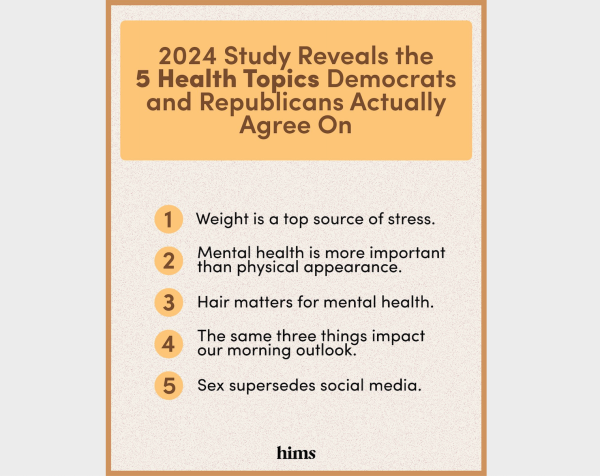Gov. Gavin Newsom issued an executive order Thursday ordering state agencies to adopt clear policies to address homeless encampments.
The executive order follows the recent U.S. Supreme Court decision in Grants Pass v. Johnson, which gave local governments the authority and legal standing “to address dangerous encampments and help provide those residing in encampments with the resources they need,” according to the governor’s office.
“This executive order directs state agencies to move urgently to address dangerous encampments while supporting and assisting the individuals living in them — and provides guidance for cities and counties to do the same,” Newsom said in a statement. “The state has been hard at work to address this crisis on our streets. There are simply no more excuses. It’s time for everyone to do their part.”
Newsom also noted the harsh conditions that homeless people endure, such as “extreme weather, fires, predatory and criminal activity, and widespread substance use.”
While the governor does not have the authority to require action at the local level, the state’s chief executive is able to influence cities and counties with how he decides to allocate billions of state dollars for homelessness reduction efforts.
Newsom’s latest directive builds on the state’s ongoing efforts and “unprecedented investments” to address the decades-long homelessness crisis while “respecting the dignity and well-being of all Californians,” according to the governor’s office. Newsom’s order directs state agencies to implement “humane and dignified policies to urgently address encampments on state property, including by taking necessary and deliberate steps to notify and support the people inhabiting the encampment prior to removal.”
California’s record-setting investments to address the homelessness crisis include $24 billion across multiple state agencies with billions in funding to aid cities and counties in providing services and support to people who live in encampments. In Fiscal year 2022-23, this funding helped transition more than 165,000 people from homelessness to interim or permanent housing.
The executive order calls for policies consistent with the California Department of Transportation’s existing encampment policy. Since July 2021, California has dismantled more than 11,000 encampments and removed 248,275 cubic yards of debris from encampments to prepare state roadways for Clean California beautification projects, the governor’s office reported.
“Prioritizing encampments that pose a threat to the life, health, and safety of the community, Caltrans provides advance notice of clearance and works with local service providers to support those experiencing homelessness at the encampment, and stores personal property collected at the site for at least 60 days,” officials said.
To effectively address encampments at the local level, Newsom encouraged municipal governments to replicate the state’s policy model laid out in the executive order and to use all available resources, including those provided by the sizable investments in housing and intervention programs.
Proposition 1 funding for local governments
Newsom also urged local governments to apply for the newly available $3.3 billion in grant funding from Proposition 1 that expands the effort to provide appropriate care to people with mental health conditions and substance use disorders, focusing on people “who are most seriously ill, vulnerable or homeless,” according to the governor’s office.
Proposition 1 has two tiers — one is a $6.4 billion Behavioral Health Bond for treatment settings and housing with services, and the other part is reform of the Behavioral Health Services Act to concentrate on people experiencing the most serious illnesses, substance disorders and housing needs. State officials also recently released a guide for counties, the Proposition 1 Behavioral Health Services Act: Housing Supports Primer, which explains how to spend the projected $950 million annual BHSA funding for connecting homeless California residents with housing.
Since Newsom took office in 2019, the state has developed an action plan to reduce homelessness, and he “has demanded unprecedented accountability from local governments to do their part to end the homelessness crisis through regionally coordinated action plans,” officials said.
The governor’s office emphasized the state’s $24 billion to address the housing crisis that includes $4.85 billion for Homeless, Housing Assistance and Prevention Grants for local jurisdictions, $1 billion in Encampment Resolution Funding to help municipalities provide services and support to encampment residents and $3.3 billion for the Homekey program to rapidly expand housing for the unhoused.
The entire executive order is available on the state’s website.
Local officials respond
Southern California elected officials responded to the governor’s executive order.
Lindsey Horvath, chair of the Los Angeles County Board of Supervisors and the LA Homeless Services Authority Commission, supported the governor’s order.
She said in a statement the county’s Pathway Home program “is doing exactly what this state order calls for — urgent and humane encampment resolution. Los Angeles County is — and has been — all in on doing our part under our homelessness emergency.”
Horvath noted the next week’s Board of Supervisors meeting will have a discussion on how the county will continue to “coordinate and scale a regional response that delivers lasting results.”
LA County Supervisor Kathryn Barger said in a statement, “I applaud Governor Newsom’s emphasis on urgency. He rightfully points out that local government remains at the helm of homeless encampment removals,” Barger said. “Cities have an obligation to develop housing and shelter solutions in tandem with support services provided by county government. This formula, which is largely based on partnerships, is how we can deliver permanent results. No single entity can achieve that.”
Supervisor Hilda Solis added that the homelessness crisis can “only be solved with a coordinated and unified response.” Solis said she would introduce a motion at the next board meeting that will start the process of developing a countywide plan for addressing homeless encampments. Her proposal includes provisions to reinforce the county’s “Care First” approach to removing encampments and make sure that county jails will not hold people arrested for violating anti-camping laws.
Supervisor Janice Hahn said encampments were “not safe” for people who live in encampments or area residents who live or work near them. Like Horavth, Hahn also noted that Newsom is ordering state agencies mirror LA County’s Pathway Home initiative.
“I have asked our county departments to double down on this effort and I am celebrating the $51 million grant we received from Gov. Newsom’s administration to use this strategy to address encampments along the 105 freeway,” Hahn said in a statement. “This work needs to begin as quickly as possible.”
LA Mayor Karen Bass is in Paris for the Olympics and did not respond directly to the governor’s executive order.
But in her latest announcement Thursday of a recent Inside Safe operation that housed 15 homeless city residents, Bass observed that “for the first time in years, unsheltered homelessness has decreased in Los Angeles because of a comprehensive approach that leads with housing and services, not criminalization. Strategies that just move people along from one neighborhood to the next or give citations instead of housing do not work.”
LA City Controller Kenneth Mejia in a statement Thursday said removing encampments does “not help reduce homelessness or encampment numbers over time.”
The controller’s office cited a RAND Corp. study published earlier this month that showed areas with frequent removal operations saw encampments return within months, and in Venice, the number of unhoused people living unsheltered without a tent or vehicle increased from 20% to 46% between 2021 and 2023.
Mejia also noted that “earlier this year, the Los Angeles Homeless Services Authority … found that LA Municipal Code 41.18, which allows for encampment removal in certain areas, isn’t effective at reducing encampments or helping to house people — while costing over $3 million in two years, not including enforcement costs.”
Bass on Tuesday challenged the RAND study’s findings, saying encampments repopulated in 2023 may not be the same people who inhabited cleared encampments, according to published reports. LA City Councilwoman Traci Park, who represents Venice, also criticized the study’s conclusions, claiming efforts to reduce encampments from 2023 onward have been successful.
Instead of banning encampments, Mejia urged Bass and council members “to ban criminalizing homelessness” and the City Attorney’s Office not to enforce laws that punish people experiencing homelessness.
“The city of Los Angeles must reject Gov. Newsom’s inhumane, unproven policy,” according to Mejia’s statement.
LA Councilwoman Eunisses Hernandez said on X, “We must continue to pursue solutions that we know will create lasting change, not revert to criminalization and displacement.”
LA County Republican Party Chairman Timothy O’Reilly said Newsom’s efforts to reduce homelessness have been “empty promises.”
“While we are hopeful that his encouragement of local agencies will prompt Los Angeles to stop being a mecca for broken souls, Angelenos have seen all-talk, no-action moves from the city and the county before,” O’Reilly said in a statement to City News Service. “You would think that after billions of dollars of spending, our streets, public parks and libraries would be clean and usable by all residents, and that the mentally ill and drug-addicted would be getting the help they so sorely need.”
The Supreme Court’s 6-3 decision June 28 reversed a San Francisco appeals court ruling that found bans on outdoor sleeping are cruel and unusual punishment when there is no space available at homeless shelters. The Supreme Court’s majority ruled the Eighth Amendment does not apply to laws banning outdoor sleeping.
Also last month, the Los Angeles Homeless Services Authority announced the number of unhoused people in the Los Angeles area had dropped slightly in 2024, reversing a five-year trend of increases.
LA County has 75,312 unhoused people this year compared with 75,518 in 2023, a slight decrease of 0.27%, according to the annual point-in-time count by hundreds of volunteers Jan. 24-26. The city of Los Angeles has 45,252 unhoused individuals in 2024 and had 46,260 in 2023, a 2.2% drop.
City News Service contributed to this report.
Updated July 26, 2024, 10:30 a.m.







